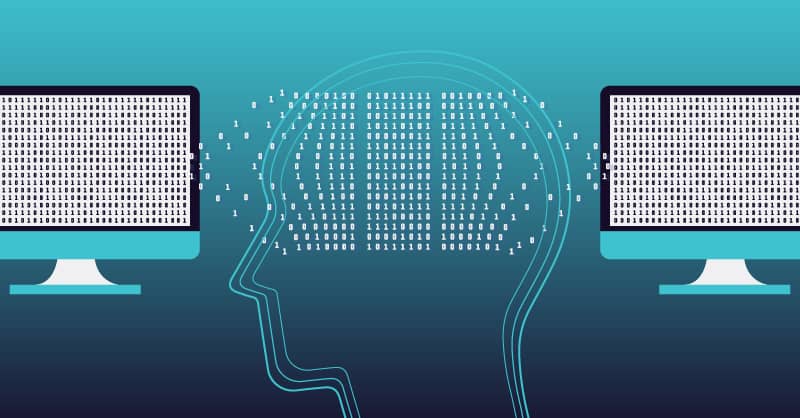
5 min read
Software in Space: The Computers That Made Apollo Missions Possible
Software in Space: The Computers That Made Apollo Missions Possible
When you think of the Apollo missions, you think first of brave astronauts, facing the unknown and exploring territory humans had never seen before. But without the heroes down on Earth creating the software necessary to blast off, humans would have never seen outer space. The space race coincided with a boom in digital technology that boosted the human race into the stratosphere and beyond.
Computers in the 1960s were nothing like the handheld supercomputers we have today. Back then, computers took up entire rooms, and their output was always printed out. A minicomputer would cost more than $100,000 and weighed more than 1,500 pounds. Coding was done entirely with punch cards, a method that has completely disappeared today.
- Timeline of Computer History: 1960s
- Computing in the Early Sixties
- History of IBM in the 1960
- Mainframes to PCs
- Computers and Space Exploration
In the 1960s, people who worked in software development were also called computers. This work was often assigned to women, as computing was thought of as similar to clerical work like typing or filing. These computers would compile and process the data as it printed from the machines and do calculations of things such as the lift and drag on spacecraft wings. This type of work was incredibly math-heavy and was essential to the space program. For the space race, these women had to solve incredibly difficult problems and ensure that the spacecraft made it safely to its destination.
- What it Took to Be a NASA Computer
- Computer Programming Used to Be Women’s Work
- Computer Programmers in Short Supply in 1969
- Celebrating the Engineers Behind the First Moon Landing
- Big Computers, Big Hair: The Women of Computing in the 1960s
- When Computers Were Human: The Black Women Behind NASA’s Success
The Apollo missions were powered by the Apollo Guidance Computer (AGC), which was used in pairs: one on the command module and the other on the lunar module. The AGC had about 64 KB of memory and 0.04 MHz in processing power. This is exponentially less than the amounts on the average desktop computer today! The computer’s job was to monitor every single part of the ship and be the guidance system. It was considered compact for the time, weighing about 140 pounds. Pushing the size as small as possible required incredible leaps forward in technology, such as integrated circuits.
- The Apollo Guidance Computer: An Introduction
- Five Engineering Facts About the Apollo Guidance Computer
- Milestones: Apollo Guidance Computer, 1962-72
- Your Car Has More Computing Power Than the System That Guided Apollo Astronauts to the Moon
- Hidden Messages Found in Computer Code of Apollo Moon Mission
- Apollo’s Brain: The Computer That Guided Man to the Moon
Many programming languages today are very high-level, meaning that they are more or less readable by human eyes and use English words. On the other hand, the AGC was written in assembly language. With this method, the coding manipulated the bits on the circuits directly. The code was full of comments, explaining what each piece did, the history of its (development), and/or why it was written the way it was. Some of the code even contained interesting cultural references. For example, the ignition routine is called BURN_BABY_BURN in reference to the LA riots of 1965 and a local DJ’s catchphrase.
- Archiving and Referencing the Apollo Source Code
- The Amazing Handmade Tech That Powered Apollo 11’s Moon Voyage
- Apollo 11 Programming Lessons Still Relevant Today
- Apollo and the Birth of Software Engineering
- The Underappreciated Power of the Apollo Computer
- How They Built it: The Programming of Apollo 11
Struggling to conquer challenges thought impossible to surmount is how technology progresses, and that’s exactly what happened with the Apollo missions. Computers were huge, bulky, and definitely not cut out to be shot into space. To make space flight possible, the engineers had to push themselves to make computers smaller, faster, and easier to use; the astronauts certainly couldn’t be punching cards in space. The computer had to communicate in real time as it guided the ship and the astronauts. All of these challenges pushed technology beyond what we knew was possible.
- How Apollo 11 Influenced Modern Computers
- NASA’s Apollo Technology Has Changed History
- The Technology Used to Reach the Moon Was Put to Use on Earth
- Ten Pieces of Modern Tech Indebted to Apollo
- How Technology From the Space Race Changed the World
- How the Space Race Changed Computing
- How the Moon Landing Still Shapes Our Lives
DIGITAL STRATEGY + DESIGN
- UX Design Company
- Design Sprint
- Design User Research
- Innovation Consulting Firms
- UI Consulting
- Software Product Design And Development
CUSTOM SOFTWARE DEVELOPMENT
- Mobile App Development Agency
- Web Application Development Company
- Web Portal Development
- Legacy Application Modernization
- Software Development Services
- Insurance Software Services

